What if that whole process, however, is heavily stacked against the citizen?
History has demonstrated that when faced with totalitarian government, fascist government, change does not proceed peacefully. Even in the bastion of "freedom", the USA, one of the most bitter and deadly revolutions took place. It was messy, brutal and deadly.
monkeywrenchrevival.blogspot.com - 300 × 229 - imageby Joe Verica
Monkey wrenching is the process by which citizens proceed to undermine authority, anonimously and illegally, to the extreme.
The free dictionary defines it as
2. Informal Something that disrupts: He threw a monkey wrench into our plans.
Edward Abbey, widely recognized as the founder of the environmental movement in the SW USA adopted this concept in his comic adventure eco terrorist tale by the same name.
http://www.theguardian.com/books/2009/sep/26/robert-macfarlane-monkey-wrench-gang
http://www.theguardian.com/books/2009/sep/26/robert-macfarlane-monkey-wrench-gang
Some of the literature available about Monkey wrenching include:
Ecodefense: A Field Guide to Monkeywrenching [Paperback]
Dave Foreman (Author)People are tired of talk and collaboration and are willing to pay the price of their convictions through radical strategy, tactics and techniques. The tactics of monkey-wrenching aren't for everyone espeically those who try to work "within the system" to bring about changes in public complacency and corporation-driven public policy.
It is entirely reprinted here:
Another definition of monkey wrenching: http://curiosity.discovery.com/question/what-is-monkeywrenching
"Monkeywrenching" is a term first used in a book about eco-terror, "The Monkey Wrench Gang," written by Edward Abbey in 1975.
...it is a popular term for methods of eco-defense, including spiking trees, disabling vehicles and stopping up waste pipes. Monkeywrenching techniques also were described in the 1985 book by Dave Foreman called "Field Guide to Monkey Wrenching." The Abbey and Foreman books are used as how-to manuals for eco-defense. see:
The urban dictionary has another similar description: http://www.urbandictionary.com/define.php?term=Monkeywrenching
1.
Monkeywrenching
A type of most oftenly illegal sabotage for the
means of slowing down, or making it counter effective to continue with a
certain activity. Or simply to spread chaos.
Often used by activist for ecodefense against government sanctioned activity (clear cutting, polluting, etc.) by means of spiking trees, sugar in gas tanks of equipment, etc. Can also used against the statis quo and corporate america by wheat pasting bill boards, filling pay phones with vanille pudding, etc.
Often used by activist for ecodefense against government sanctioned activity (clear cutting, polluting, etc.) by means of spiking trees, sugar in gas tanks of equipment, etc. Can also used against the statis quo and corporate america by wheat pasting bill boards, filling pay phones with vanille pudding, etc.
COMMENTARY:
The best monkey wrenchers are never caught because they usually work alone and never tell anyone of their doings for that is how one is caught.
The wise geek has offered this definition:
http://www.wisegeek.com/what-is-monkeywrenching.htm
Monkeywrenching is a form of sabotage
that focuses on creating serious economic damage, thus putting a
temporary or permanent halt to activities that the perpetrator believes
are undesirable. The activity is closely associated with the
environmental movement, although other causes have embraced
monkeywrenching as well. Different saboteurs are governed by different
ethical codes, and a number of guides to creating this type of damage
have been published for those who might be seeking inspiration.
The
concept of throwing a monkey wrench into a situation to confuse it
dates back to the late 1800s. By 1918, the term “throw a wrench in the
works” was used specifically in the context of industrial sabotage.
Activists who fought for better working conditions and pay might choose
to directly damage corporate machinery in the hopes of causing a
standstill in factory operations. While the equipment was repaired, the
workers could put forth their requests. Workers would also deliberately
destroy machinery owned by companies with questionable practices, in the
hopes of shutting them down.
The most extreme source of information appears to come from http://theanarchistlibrary.org/library/Various_Authors__Ecodefense__A_Field_Guide_to_Monkeywrenching.html.
As radical as the principle appears: it claims to have some rules so that a campaign of resistance would adhere to the following principles:
Monkeywrenching is nonviolent
Monkeywrenching is diverse
Monkeywrenching is fun
Monkeywrenching is not revolutionary
No major industrial sabotage. Explosives, firearms, and other dangerous tools are usually avoided;
Monkeywrenching is simple
The monkeywrencher asks, What is the simplest way to do this?
Monkeywrenching is deliberate and ethical
The purpose is protecting life, defending Earth.
To all this I will add:
Monkeywrenching is illegal and punishable by severe penalties
The penalties for ecoterrorists are varied and severe: For example one piece of legislation attempts to define the consequences of tree spiking (which reduces the economic value of forests and therefore discourages clearcutting...
some plain talk from Edward Abbey himself
- never directed against human beings or other forms of life
- aimed at inanimate machines and tools that are destroying life
- minimize any possible threat to people, including the monkeywrenchers themselves.
- no central direction or organization to monkeywrenching.
- individual action
- difficult and dangerous.
- Anonymous discussion only
- Trust and a good working relationship are essential
- beware the dangers of infiltration or a loose mouth.
- Mindless, erratic vandalism is counterproductive as well as unethical.
- the most vulnerable point of a wilderness-destroying project is struck
- no action when there is a nonviolent civil disobedience action or delicate political negotiations are taking place for the protection of a certain area.
Monkeywrenching is diverse
Monkeywrenching is fun
Monkeywrenching is not revolutionary
No major industrial sabotage. Explosives, firearms, and other dangerous tools are usually avoided;
Monkeywrenching is simple
The monkeywrencher asks, What is the simplest way to do this?
Monkeywrenching is deliberate and ethical
The purpose is protecting life, defending Earth.
To all this I will add:
Monkeywrenching is illegal and punishable by severe penalties
The penalties for ecoterrorists are varied and severe: For example one piece of legislation attempts to define the consequences of tree spiking (which reduces the economic value of forests and therefore discourages clearcutting...
Whoever — (1) with the intent to violate the Controlled Substances Act, (2) with the intent to obstruct or harass the harvesting of timber, or (3) with reckless disregard to the risk that another person will be placed in danger of death or bodily injury ... uses a hazardous or injurious device on Federal land, or on an Indian Reservation ... shall be punished under subsection (b).Subsection (b) spells out the penalties:
(1) If death of an individual results, [the person convicted] shall be fined under this title or imprisoned for any term of years or for life, or both; (2) if serious bodily injury to any individual results, be fined ... or imprisoned for not more than twenty years, or both; (3) if bodily injury to any individual results, be fined ... or imprisoned not more than ten years, or both; (4) if damage exceeding $10, 000 to the property of any individual results, be fined ... or imprisoned for not more than ten years, or both; and (5) in any other case, be fined ... or im-prisoned for not more than one year.



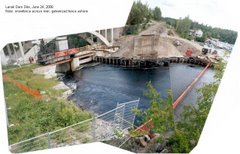


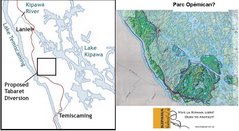

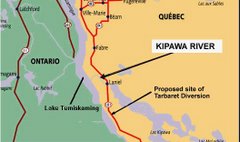

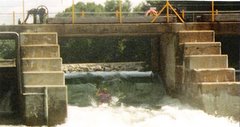





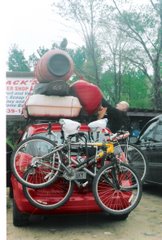

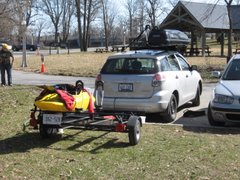

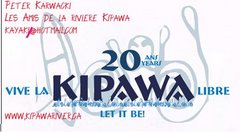
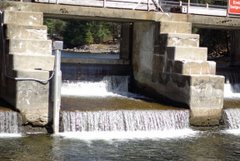


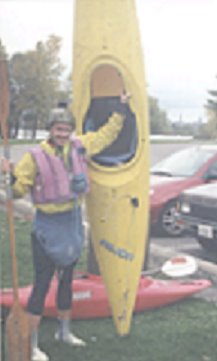



1 comment:
http://www.wrenched-themovie.com/
Post a Comment